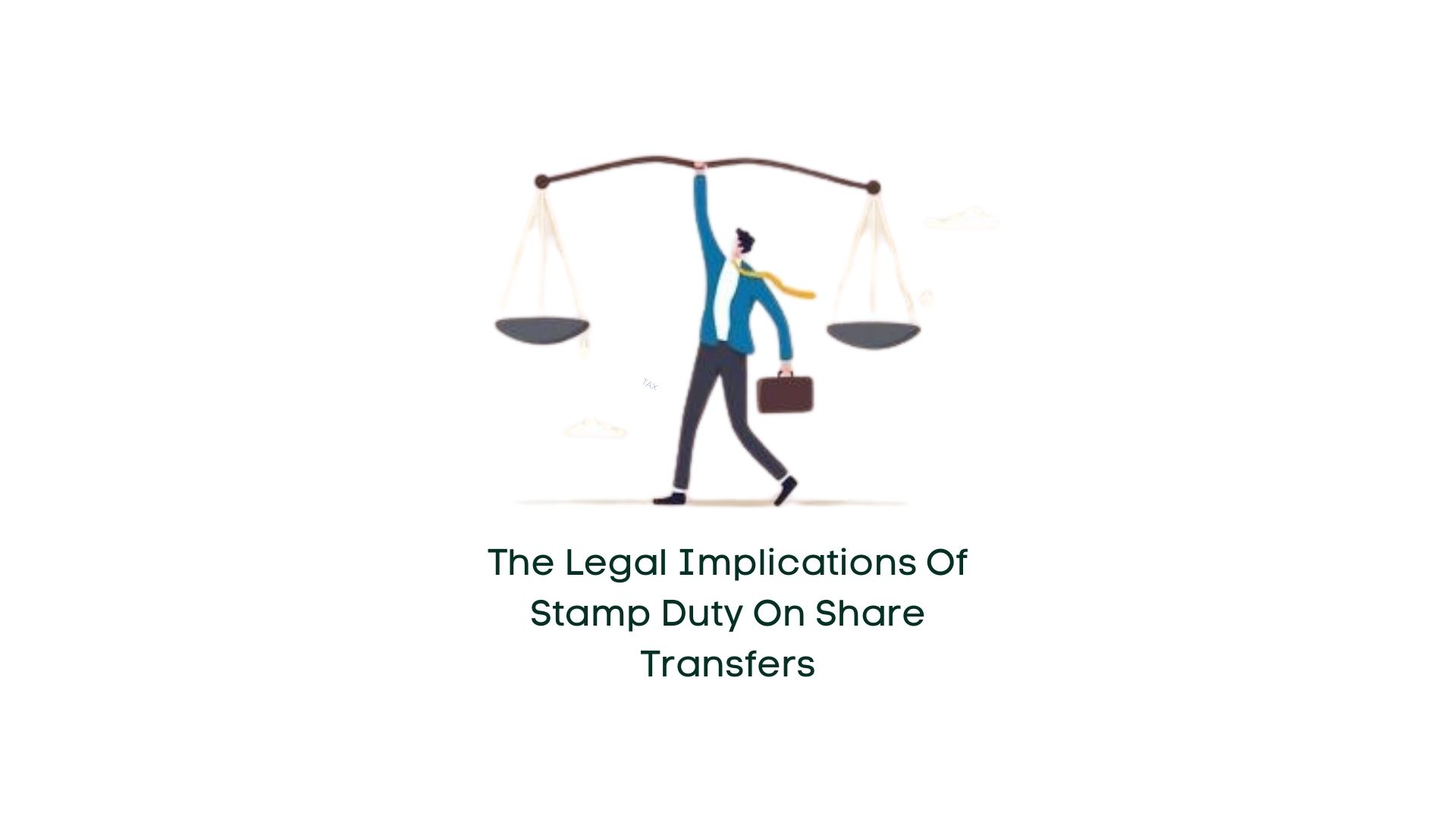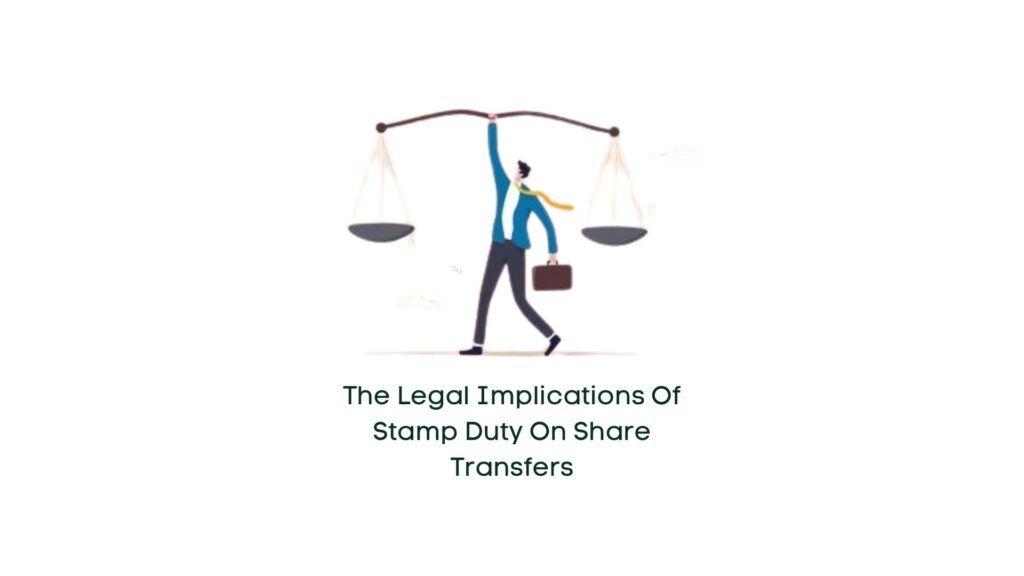
29 Feb The Legal Implications of Stamp Duty on Share Transfers

In the realm of financial transactions, the transfer of shares carries legal obligations, particularly concerning the payment of stamp duty. Defined under the Indian Stamp Act, 1899, stamp duty is a levy imposed by the Central Government on various instruments, including those involved in share transfers. This article delves into the legal framework surrounding the payment of stamp duty on share transfers, as dictated by both the Indian Stamp Act and the Companies Act.
Understanding Stamp Duty and Its Legal Framework
The primary objective of the Stamp Act, 1899, is to generate revenue for the government while also ensuring the validity of documents. Instruments duly stamped, as per Schedule-1 of the Act, hold admissibility as evidence in courts. The legislation empowers the central government to collect stamp duty on specific instruments listed under the Union List, such as transfer forms for shares. State governments, on the other hand, have jurisdiction over stamp duty on instruments listed under the State List, as outlined in Schedule-1A of the Stamp Act.
Calculation and Payment of Stamp Duty
Stamp duty calculation varies based on the nature of the instrument or document involved. It can be fixed, value-dependent, or a combination of both. For share transfers, Article 62 of Schedule-1 prescribes stamp duty rates, with concessions for specific transactions like transfers from trustees to beneficiaries or among trustees. Stamp duty payment is typically facilitated through non-judicial stamp papers or adhesive stamps, with franking becoming prevalent post the Telgi scam.
Legal Considerations in Stamp Duty Payment for Share Transfers
Determining the party responsible for stamp duty payment in share transfers involves legal nuances. According to Section 29 of the Stamp Act, absent any contrary agreement, the expenses of stamp duty fall on the individuals executing the document. Case law clarifies that while the transferor is primarily liable for stamp duty, both transferor and transferee must execute the transfer deed. The deed must be duly stamped and signed before its execution, as per Section 17 of the Stamp Act and Section 108 of the Companies Act, 1956.
Ensuring Compliance and Addressing Challenges
Proper execution and stamping of transfer deeds are crucial to avoid legal repercussions. Duly executed entails signatures from all necessary parties, along with adherence to prescribed formalities. Stamp cancellation, as mandated by Section 12 of the Stamp Act, prevents reuse of adhesive stamps and ensures the validity of the instrument. In cases where valuation poses challenges, recourse to legal adjudication under Section 31 can provide clarity.
Transition to Electronic Share Transfers
The advent of electronic transfers through depositories has transformed share transactions. Amendments to the Indian Stamp Act accommodate electronic transfers, exempting them from stamp duty provided consolidated stamp duty is paid by the issuer. Transfer of registered ownership or beneficial ownership through depositories is also exempt from stamp duty.
Conclusion
While electronic share transfers dominate modern markets, ensuring compliance with stamp duty regulations remains paramount. Whether in physical or electronic form, adherence to stamp duty requirements safeguards the legality of share transfers and mitigates legal risks. As such, stakeholders must remain vigilant in fulfilling stamp duty obligations to avoid potential legal entanglements.


No Comments